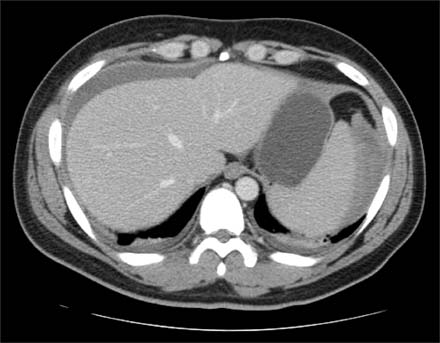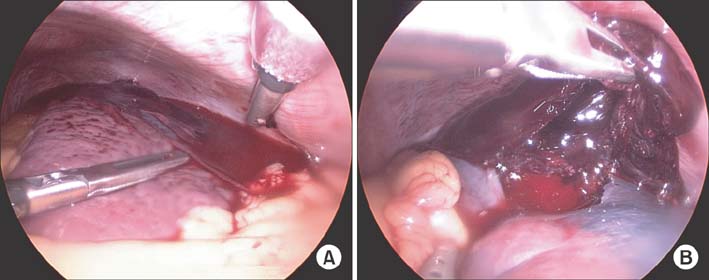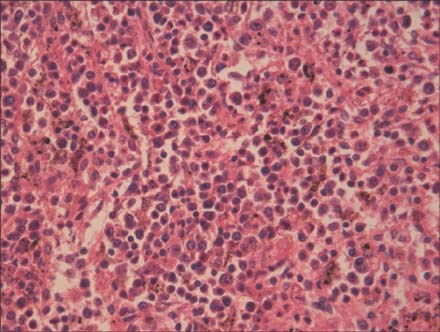Ann Surg Treat Res.
2014 Jul;87(1):44-46. 10.4174/astr.2014.87.1.44.
Spontaneous splenic rupture in Plasmodium vivax malaria
- Affiliations
-
- 1Department of Surgery, The Armed Forces Capital Hospital, Seongnam, Korea. hyperpower@hanmail.net
- KMID: 1804099
- DOI: http://doi.org/10.4174/astr.2014.87.1.44
Abstract
- Malaria can present with various clinical symptoms and complications. While a tertian malaria form that is especially prevalent in Korea is characterized by mild clinical progression, occasional splenic complications are known to occur. A 26-year-old Korean male soldier without prior medical history visited The Armed Forces Capital Hospital with left upper quadrant abdominal pain one day ago. Hemostasis under laparoscopic approach was attempted. The operation was converted into laparotomy due to friable splenic tissue and consequently poor hemostasis. Splenectomy was performed. The patient was discharged at postoperative day 17 without complication. While numerous diseases can result in splenic complications, such as splenic rupture, malarial infection is known as the most common cause. The incidence of malarial infection in Korea is increasing annually, and there are occasional reports of splenic rupture due to the infection, which requires attention.
Keyword
MeSH Terms
Figure
Reference
-
1. Chun CH, Kim JJ. Malaria in Korea. Korean Med. 1959; 2:63–66.2. Song HO, Park MK, Hyun CL. Analysis of multidrug resistant gene mutation in Plasmodium vivax. J Korean Mil Med Assoc. 2012; 43:1–13.3. Clezy JK, Richens JE. Non-operative management of a spontaneously ruptured malarial spleen. Br J Surg. 1985; 72:990.4. Ozsoy MF, Oncul O, Pekkafali Z, Pahsa A, Yenen OS. Splenic complications in malaria: report of two cases from Turkey. J Med Microbiol. 2004; 53(Pt 12):1255–1258.5. Patel MI. Spontaneous rupture of a malarial spleen. Med J Aust. 1993; 159(11-12):836–837.6. Zingman BS, Viner BL. Splenic complications in malaria: case report and review. Clin Infect Dis. 1993; 16:223–232.7. Tauro LF, Maroli R, D'Souza CR, Hegde BR, Shetty SR, Shenoy D. Spontaneous rupture of the malarial spleen. Saudi J Gastroenterol. 2007; 13:163–167.8. Schuler JG, Filtzer H. Spontaneous splenic rupture. The role of nonoperative management. Arch Surg. 1995; 130:662–665.9. Hamel CT, Blum J, Harder F, Kocher T. Nonoperative treatment of splenic rupture in malaria tropica: review of literature and case report. Acta Trop. 2002; 82:1–5.10. Opondo E, Khan MR. Laparoscopic conservative management of a spontaneously ruptured spleen: case report. East Afr Med J. 2008; 85:616–618.
- Full Text Links
- Actions
-
Cited
- CITED
-
- Close
- Share
- Similar articles
-
- A Case of Spontaneous Splenic Rupture in Vivax Malaria
- Two Cases of Vivax Malaria Accompanied by Splenic Complications (such as splenic rupture and splenic infarction)
- Spontaneous Splenic Rupture in a Vivax Malaria Case Treated with Transcatheter Coil Embolization of the Splenic Artery
- A Case of Spontaneous Splenic Rupture in Vivax Malaria
- A Case of Plasmodium vivax Malaria Associated with Autoimmune Hemolytic Anemia




